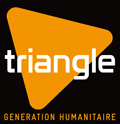AREA OF EXPERTISE

Food security and livelihood

AREA OF EXPERTISE

Food security and livelihood
FUNDING
If an improvement was observed in the food situation in Sudan over the past two years, the persistence of ethnic conflicts, the presence of armed militias and the traditional divide between farmers and herders limit the possibilities of improving security conditions and thus the food situation of the inhabitants, the latter being largely dependent on a secure land use.
However, despite this noticeable improvement, the food situation in Darfur remains a concern for a vast majority of families who remain in precarious conditions with no prospect of lasting improvement, while humanitarian intervention is faltering, along with the withdrawal of humanitarian organizations and the reduction of available funding. In a general context of declining aid, Darfur draws less attention from donors, who turn to other international crises, and the number of humanitarian actors in Darfur continues to decline.
This project is based on a survey conducted by TGH in October 2014 in its intervention areas, highlighting improved food security thanks to favorable external factors but also to operative choices such as a diversification effort by TGH favoring non-cereal rainfed crops (vegetables, peanuts) or short-cycle grain species. These choices have allowed an increase in agricultural production enabling both consumption and an increase in household income through the sale of crops. Through this project, TGH perseveres with a view to promote long-term food security in the target areas.
Previous projects carried-out by TGH increased the productive capacity of the most vulnerable farmers, helping them diversify their productions through the promotion of early maturing seeds, having both an impact on food availability and on early cash availability.
The following project is divided into several parts: